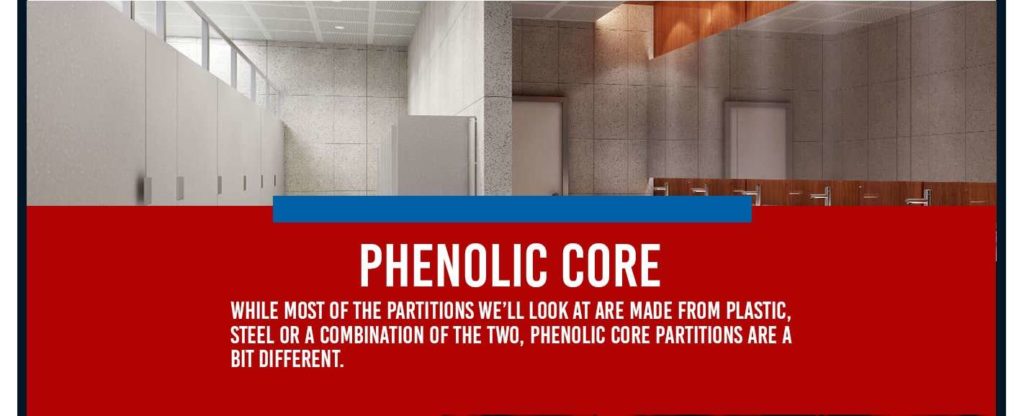HDPE vs. Phenolic Toilet Partitions
If you’re opening your own small business or you manage a larger commercial property, adding bathroom partitions in the restrooms allows for more stalls and privacy for employees and customers. There are many different types of materials used to make these partitions, each with their own pros and cons. Choosing the right material for your establishment’s bathroom partitions is important.
When you’re choosing the right toilet partition material, you want to consider all of your options and look at all of the advantages and disadvantages. Once you’ve done your research, you can make an informed decision about the best material for your business.
Two common materials for toilet partitions are HDPE (high-density polyethylene) and phenolic.
HDPE Toilet Partitions
HDPE is made from a resin of high-density polyethylene that has added pigments to give it color. The polyethylene resin gives the door a solid plastic construction that helps protect it. This material works for both indoor and outdoor bathrooms.
Toilet partitions made from this material are highly resistant to many effects. They are water-resistant, making them less susceptible to mold and mildew growth. This quality can help keep your bathroom more sanitary. The material also resists abrasions from a variety of sources. With this advantage, your HDPE partition will stay looking like new for a longer period of time than other materials.
High-density polyethylene partitions are recyclable, making them a sustainable option. If your business is dedicated to sustainability and lowering its impact on the environment, then this material makes a great pick.
Finally, compared to phenolic toilet partitions, HDPE partitions come at a slightly lower cost. While the difference isn’t significant, if your business is working on a budget, any savings can be important.
Phenolic Toilet Partitions
Phenolic toilet partitions are made from a combination of a resin and fiber material. A protective and colorful sheet of laminate is place on the main faces and these materials are put under high heat and high pressure creating an homogeneous product. This creates a very sturdy and rigid sheet for the partition.
Like HDPE, phenolic partitions are water-resistant, meaning they work well in indoor and outdoor bathrooms. It’s also a great choice for building shower stalls, like in a college dormitory or gym.
This material also resists soaps, detergents and other compounds. This makes it easy to clean them without affecting the look of the partition. With this quality, you can clean the partitions as frequently as necessary to help keep them looking their best.
When you choose phenolic, you’ll have a wider selection of colors and patterns. The laminate makes it possible to give phenolic bathroom partitions different looks. With more color options available, you can customize the appearance and atmosphere of your business’s bathroom.
Get a Free Quote
Choose One Point Partitions for top-quality partitions in your business or organization’s bathrooms. With a selection of different materials available, we will help you find the right match for your needs. Our products are American-made from quality materials while utilizing expert product design.
Prices for phenolic stalls start as low as $700. Call us today to request a free quote from One Point Partitions today.

